
CAD drafting remains an inseparable part of the fabrication industry given its acute importance from design development to manufacturing. Detailed CAD drafting can thus become tricky but outsourcing CAD drafting services are there to you rescue.
Table of Contents
- Why do fabricators need CAD drafting outsourcing?
- What are fabrication drawings?
- Types of Fabrication Drawings
- Why are Fabrication Drawings Important?
- What is 2D fabrication drafting?
- Converting 2D fabrication drawings to 3D CAD drawings/model
- How to identify the right fabrication drawing service provider?
- How can Hitech Engineering Services help you?
If you own a manufacturing or fabrication unit wherein you undertake fabrication projects for your clients, CAD drafting becomes your indispensable service. Whether you manufacture furniture products, doors or windows, shelters, wooden or metal cabinets, frames or store fixtures, CAD platforms like Autodesk Inventor, SolidWorks, AutoCAD and many others have become inevitable for you.
Requirements for CAD drafting for fabrication can be complex and complicated. Hence, today, the onus is upon the fabricator to choose the right outsourcing CAD drafting service provider for their unit.
Why do fabricators need CAD drafting outsourcing?
By an outsource service provider we are essentially looking at a CAD outsourcing firm. This helps fabricators to bring down engineering lead times and increase profit margins big time.
Today, there are many players offering myriads of CAD services for manufacturers, wooden and metal contractors and fabricators across the globe. However, a CAD drafters’ team that blends well with your design engineer is the one that you need.
Some deliverables by CAD outsourcing firms:
- Scan / Paper to CAD Conversion
- 2D to 3D CAD Drafting Conversion
- SolidWorks CAD Drafting
- AutoCAD 2D/3D Drafting
- 3D CAD Drawings
- Fabrication Shop Drawings
- Manufacturing Drawings with BOMs
Transformed 2D Drawing to 3D CAD Models For Industrial Tool Manufacturer
A USA based tool manufacturer had design legacy of 2D drawings in non-editable format obstructing design alterations. By partnering with Hitech CAD engineers, 2D drawings were converted to part and assembly drawings in CAD to improve turnaround times.
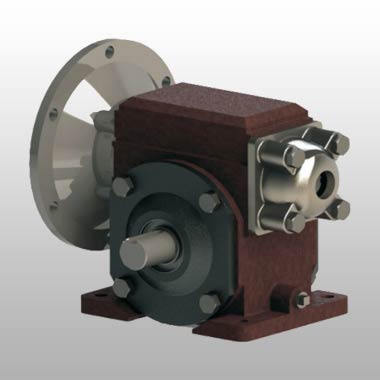
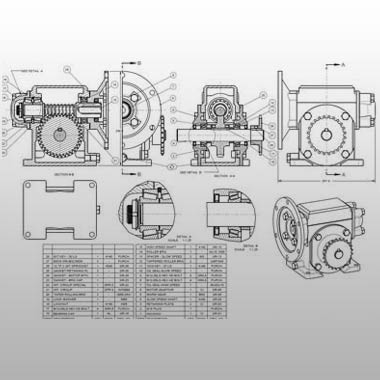
Amongst these, fabrication drawings remain the most sought-after deliverable for fabricators to carry out uninterrupted fabrication stage.
What are fabrication drawings?
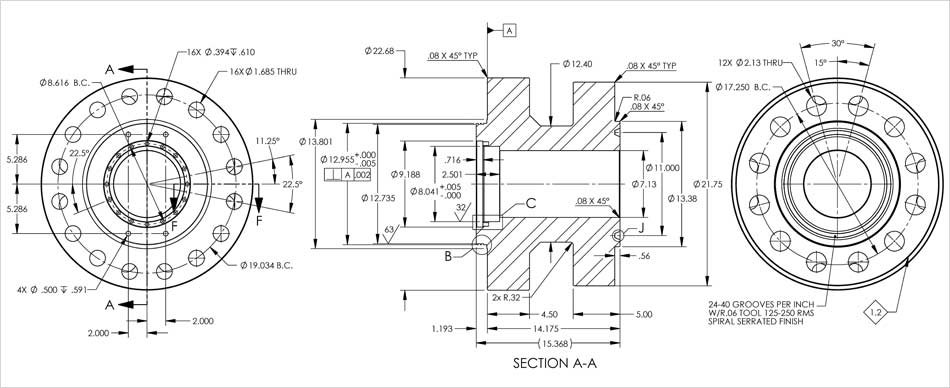 Fig 1: A Fabrication Drawings
Fig 1: A Fabrication DrawingsFabrication drawings warehouse the detailed engineering instructions for shop floor. To begin with, they would require fabrication drawings to start with the process and all the way to part manufacturing, assembly and installation.
Types of Fabrication Drawings
Fabrication drawings, per se, involve several different sub-types as per the part to be manufactured. For instance, large multi-component assembly, there will be several smaller parts fittings with each other to make one component.
In such cases, design engineers create individual part drawings, assemblies, and complete layout and so and so forth.
Here is 3 different type of CAD Drawings useful for Manufacturers
A single part drawing depicts just the information need about one single part. It displays the dimensions and scale of the part. It also shows the material the part is made from. Also included are details such as cutting, dimensions, and weight of the material needed for this specific part.
Contrarily, a full assembly drawing includes a partial list as well as often a material list, which is also sometimes called the BOMs. The full assembly drawing also includes information about how each part will be attached to the assembly and how they will be attached together. In many instances, the production drawings used in manufacturing plants fall under this category but also applies to other industries too.
Yet another form of fabrication drawing is those, which are called general arrangement drawings (GA Drawings), which generally depict the ‘big picture’ involving the project. This drawing includes all the information about how each individual part will fit together to form the final structure.
Why are Fabrication Drawings Important?
Given the purpose it serves, fabrication drawings have importance right from manufacturing, assembly and installation stage. But it has more benefits. Let’s take a look.
5 Advantages of Fabrication Drawings
- Views of large assembly from varied angles.
- Higher accuracy and cohesiveness in manufacturing.
- Avoid fabrication hazards and errors.
- Easy decision making for welding, cutting, drilling etc. operations.
- Joint and assembly detailing with instructions and tolerances.
What is 2D fabrication drafting?
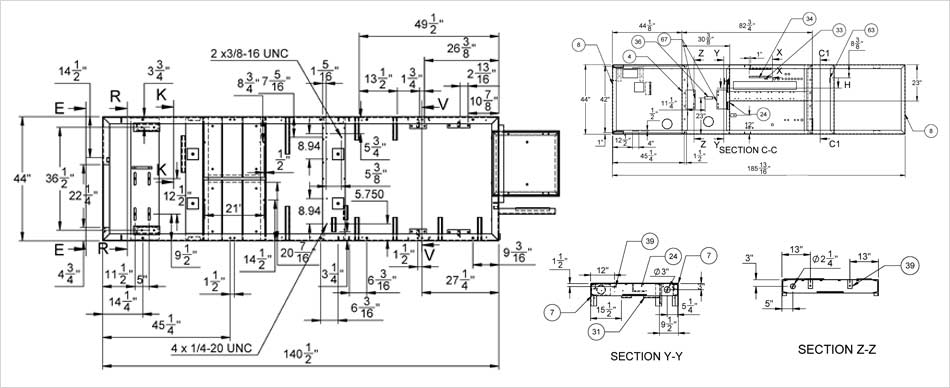 Fig 1: 2D Fabrication Drafting
Fig 1: 2D Fabrication DraftingThe days of 2D CAD drawings are not yet over. In fact, a large percentage of CAD drawings are still drawn in 2D. CAD drafters understand your tooling and creating 2D drawings to enable seamless collaboration between engineers with the fabricators.
Even today, experienced engineers deliver 2D drafting using a variety of CAD conversion services using software such as SolidWorks. It is easy to convert conceptual designs and hand-drawn sketches, PDF files and paper drawings to CAD while following international standards and code requirements such as ASME and ANSI.
Converting 2D fabrication drawings to 3D CAD drawings/model
One of the most engaging efforts required in a CAD outsourcing project is CAD conversion, wherein it is required to convert 2D designs into 3D designs, through AutoCAD, SolidWorks and Inventor. This enables the client to see the product exactly how it would look once it is built. A 3D model helps the designer show how all the parts fit together and how they will react. It is essential to see that a design fits properly in 3D to highlight any design flaws before the product is finally built.
There is one more thing called expertise and accuracy in 3D CAD drafting. There needs to be a strong focus on maintaining the integrity and accuracy of the data as well as records. A reputed CAD drafting company also will have no shortage of trained CAD drafters, who can convert a 2D design into 3D models accurately.
How to identify the right fabrication drawing service provider?
At the outset, it is essential that the CAD outsourcing company you hire is familiar with US drawings standards and techniques. The company should be familiar and knowledgeable about terms such as ISO, ASME, and a lot more.
Your design support partner should be in a position to understand the nitty-gritty of outsourcing such as the cultural differences, the professionalism required and most of all, match up to the level of work the client would require.
How can Hitech Engineering Services help you?
Outsourcing CAD drafting solutions are just the right prescription for fabricators today. These solutions bridge the gap that exists between CAD engineers and designers on the one hand and fabrication shops, product manufacturers, and prototype facilities on the other.
Such CAD services bring down the lead times and improve profitability for fabricators in competitive markets while addressing quality and timeline issues simultaneously.

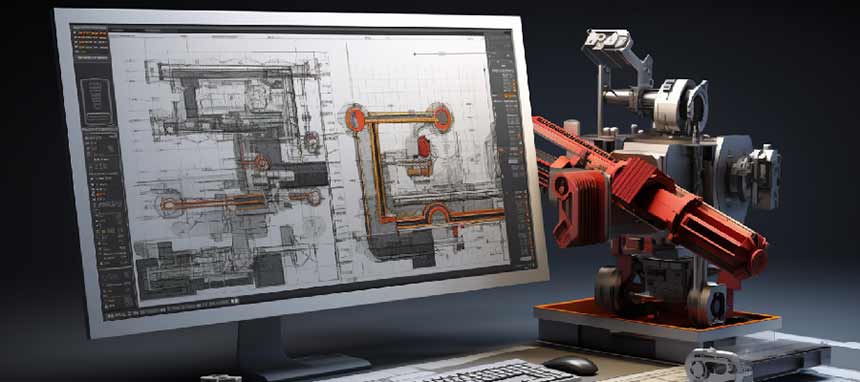


Leave a Reply